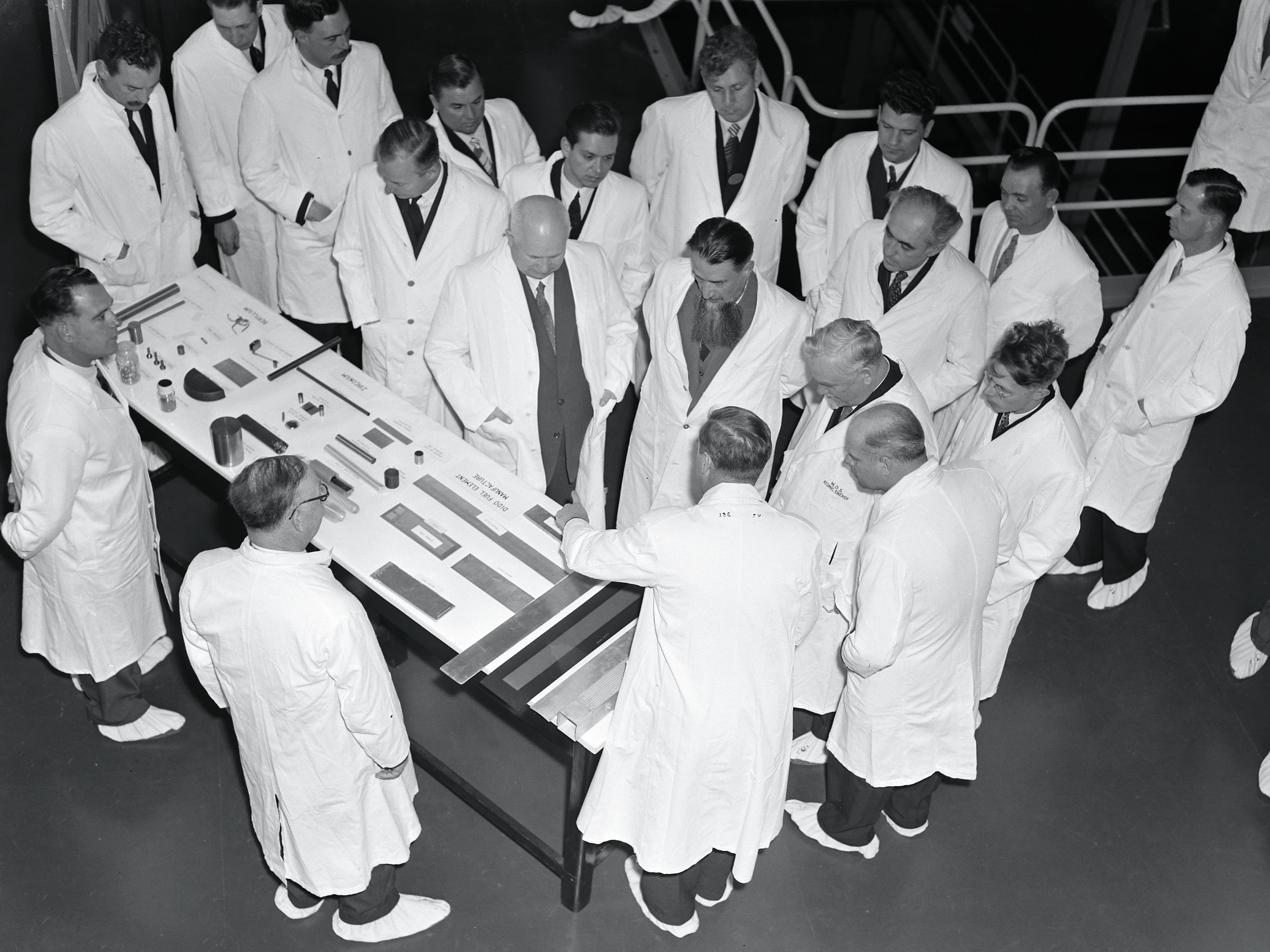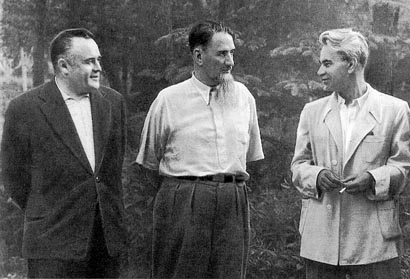<Back to Index>
- Physicist Igor Vasilyevich Kurchatov, 1903
- Sculptor François Duquesnoy, 1597
- Governor of the Massachusetts Bay Colony John Winthrop, 1587
PAGE SPONSOR
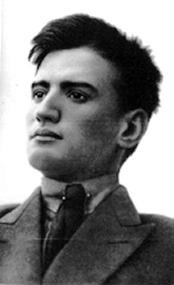
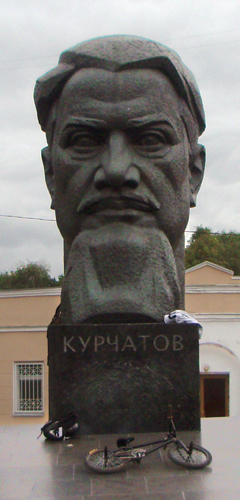
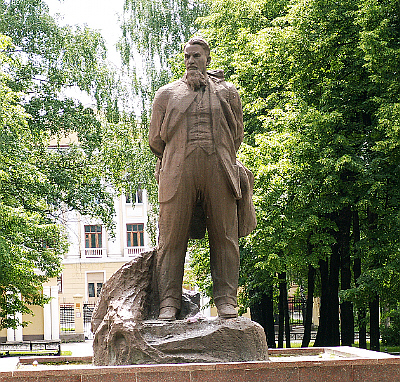
Igor Vasilyevich Kurchatov (Russian: И́горь Васи́льевич Курча́тов; 12 January 1903 – 7 February 1960) was a Soviet / Russian nuclear physicist. Under his direction, the Soviet Union successfully tested its first plutonium based nuclear device, First Lightning in 1949. For this reason he is remembered as "The Father of the Soviet Atomic Bomb".
After studying both physics and naval engineering, Kurchatov was a research assistant at the faculty of Physics of the Ioffe Physico - Technical Institute in Baku and later he worked under Dr. Abram Fedorovich Ioffe at the Physico - Technical Institute on various problems connected with radioactivity. In 1932, he received funding for his own nuclear science research team, which built the Soviet Union's first cyclotron in 1939. When World War II broke out between Germany and the USSR in 1941, Kurchatov was appointed director of the nascent Soviet nuclear programme. Under the escalating pressures of the war, including the bombings of Hiroshima and Nagasaki, Kurchatov's team successfully detonated First Lightning (a plutonium implosion bomb) at the Semipalatinsk Test Site in 1949. Kurchatov subsequently worked on the Soviet hydrogen bomb program (1953), but later worked for the peaceful use of nuclear technology, and advocated against nuclear bomb tests. Among the projects completed under Kurchatov's leadership was the first cyclotron in Moscow (1949), the first atomic reactor in Europe (1946), the first nuclear power plant in the world (1954), the first nuclear reactor for submarines in the world (1959), and the icebreaker Lenin, the world's first nuclear powered surface ship and the first nuclear powered civilian vessel, (1959).
Kurchatov was born in Simsky Zavod, Ufa Governorate (now the town of Sim, Chelyabinsk Oblast). After completing Simferopol gymnasium №1, he studied physics at Crimea State University and naval engineering at the Polytechnical Institute in Petrograd.
In 1924 - 1925, Kurchatov was a research assistant at the faculty of Physics of the Polytechnic Institute in Baku, the present day Azerbaijan State Oil Academy. In 1925 he moved to the Physico - Technical Institute, where he worked (under Abram Fedorovich Ioffe) on various problems connected with radioactivity. In 1932, he received funding for his own nuclear science research team, which built the Soviet Union's first cyclotron (21 September 1939).
In period between 1931 and 1934 in the Physical department of the Radium Institute (Leningrad), headed by Vitaly Khlopin, under the guidance and direct participation of Igor Kurchatov, Lev Mysovskii and George Gamow, was created Europe's first cyclotron (in 1932 George Gamow and Lev Mysovskii submitted a draft for consideration by the Academic Council of Radium Institute, which approved it). Installation was finished in 1937.
Kurchatov and his apprentice Georgy Flyorov discovered the basic ideas of the uranium chain reaction and the nuclear reactor concept in the 1930s. In 1942 Kurchatov declared: "At breaking up of kernels in a kilogram of uranium, the energy released must be equal to the explosion of 20,000 tons of trotyl." This announcement was practically verified during the atomic bombing of Hiroshima.
When World War II broke out between Germany and the USSR in 1941, Kurchatov switched his research first to protecting shipping from magnetic mines, and later to tank armour. In 1943 the NKVD obtained a copy of a secret British report by the MAUD Committee concerning the feasibility of atomic weapons, which led Joseph Stalin to order the commencement of a Soviet nuclear programme (albeit with very limited resources). Ioffe recommended Kurchatov to Molotov, and Kurchatov was appointed director of the nascent programme later that year.
The Soviet atomic bomb project remained a relatively low priority until information from spy Klaus Fuchs and later the destruction of Hiroshima and Nagasaki goaded Stalin into action. Stalin ordered Kurchatov to produce a bomb by 1948, and put the ruthless Lavrenty Beria in direct command of the project. The project took over the town of Sarov in the Gorki Oblast (now Nizhny Novgorod Oblast) on the Volga, and renamed it Arzamas-16. The team (which included other prominent Soviet nuclear scientists such as Julii Borisovich Khariton and Yakov Borisovich Zel'dovich) was assisted both by public disclosures made by the United States government and
by further information supplied by Fuchs, but Kurchatov and Beria
(fearing the intelligence was misinformation) insisted his scientists
retest everything themselves. Beria in particular would use the
intelligence as a third party check on the conclusions of the teams of
scientists. On 29 August 1949 the team detonated First Lightning, its initial test device (a plutonium implosion bomb) at the Semipalatinsk Test Site. Kurchatov later remarked that his main feeling at the time was one of relief. Kurchatov subsequently worked on the Soviet hydrogen bomb program (1953), but later worked for the peaceful use of nuclear technology, and advocated against nuclear bomb tests. Among the projects held under Kurchatov were the first cyclotron in Moscow (1949), the first atomic reactor in Europe (1946), the first nuclear power plant in the world (1954), the first nuclear reactor for submarines in the world (1959), the nuclear icebreaker (Lenin, and both the world's first nuclear powered surface ship and the first nuclear powered civilian vessel, 1959). During
the A-bomb programme, Kurchatov swore he would not cut his beard until
the program succeeded, and he continued to wear a large beard (often
cut into eccentric styles) for the remainder of his life, earning him
the nickname "The Beard". Kurchatov died in Moscow in 1960 after
suffering a series of strokes, and his ashes were buried in the Kremlin Wall Necropolis on Red Square. Two towns bear his name: Kurchatov Township, the headquarters of the STS, and Kurchatov near Kursk (the site of a nuclear power station), the Kurchatov Institute is named in his honour, and bears a large monument dedicated to him at the entrance. The crater Kurchatov on the Moon and the asteroid 2352 Kurchatov are also named after him.
